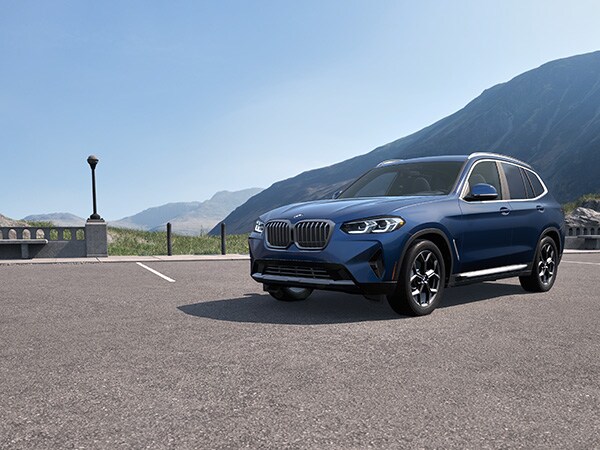
Section 179 Tax Deduction
Potential Tax Benefits Under IRS Sections 179 and 168(k)
Business owners may be able to maximize the value of their next BMW purchase by taking advantage of possible incentives available through IRS Sections 179 and 168(k). Opting for a new BMW X5, X6, or X7 instead of a traditional luxury sedan can be a strategic choice that offers meaningful benefits for both you and your business. Recent updates for the 2025 tax year may also provide even greater savings than in previous years.

IRS Section 179 for 2025
Section 179 of the IRS tax code lets businesses deduct the cost of eligible equipment — including certain vehicles — that are purchased or financed within the tax year. The IRS divides qualifying vehicles into three groups: Light, Heavy, and Other.
Three BMW SUVs qualify under the “Heavy” classification, which applies to vehicles with a gross vehicle weight rating (GVWR) above 6,000 pounds and below 14,000 pounds. These include the BMW X5, X6, and X7. For the 2025 tax year, Section 179 allows up to $31,300 in first-year depreciation for eligible “Heavy” vehicles, as long as the vehicle is purchased and put into service before January 1, 2026, and meets the additional requirements listed below:
- The vehicle may be new or pre-owned but must be acquired through a standard, arm’s-length purchase using qualified financing. The title needs to be in the business name, not the business owner’s name.
- The vehicle must be used for business at least 50% of the time. If it is used partially for personal reasons, the depreciation limit is reduced by the percentage of personal use.
- You can only claim a Section 179 deduction in the tax year when the vehicle is placed into service — meaning it is ready and available for business use, even if not actively used.
- Vehicles first used for personal purposes do not qualify later if converted to business use in a future year.
- Please note: Every business’s tax situation is different. Consult your tax professional for guidance tailored to your situation.
IRS Section 168(k) “Bonus Depreciation”
Section 168(k) provides an additional “Bonus Depreciation” opportunity. Through the end of 2025, eligible BMW X5, X6, and X7 models may qualify for up to 100% bonus depreciation on top of the $31,300 available through Section 179. When combined, these deductions may allow you to fully depreciate your qualifying business vehicle in the 2025 tax year instead of spreading the depreciation over several years. This can result in substantial tax savings while also enabling you to refresh your business fleet.
Depreciation Comparison | “Heavy” Section 179 | “Light” Section 179 |
|---|---|---|
| 2025 Maximum First-Year Section 179 Depreciation | $31,300 | $12,200 |
| Section 168(k) Bonus Depreciation | 100% of Purchase Price | Limited to $8,000 for Luxury Vehicles |
| Eligible Vehicles | New & Used | New & Used |
Sample Vehicle | BMW X7 xDrive40i | Comparable Luxury Sedan |
| Purchase Price | $97,365 | $97,365 |
| Section 179 First-Year Deduction | $31,300 | $12,200 |
| Section 168(k) First-Year Bonus Depreciation | $66,065 | Capped at $8,000 |
| Total First-Year Depreciation | $97,365 | $20,200 |
Additional First-Year Value for “Heavy” Vehicles | $77,165 | - |
Tax outcomes differ from one business to another. Information shown was accurate at the time it was created. Federal tax laws and regulations may change. Please consult your tax professional for personalized guidance.
**Because the BMW X5, X6, and X7 each have a Gross Vehicle Weight Rating (GVWR) exceeding 6,000 pounds, they fall into the “Heavy SUV” category. GVWR represents the maximum recommended weight of the vehicle fully loaded with passengers and cargo.**
**If you need assistance or clarification, please reach out to your tax advisor for exact details regarding Section 179 eligibility and rules.**
Depreciation for luxury vehicles may continue into year two at $19,800, year three at $11,900, and $7,160 for following years until fully depreciated or sold.
*Comparisons are based on rules outlined in IRS Sections 179 and 168(k), which offer first-year depreciation advantages for eligible “Heavy” vehicles. Figures assume business owners place vehicles into service by January 1, 2026 and use them exclusively for business.*